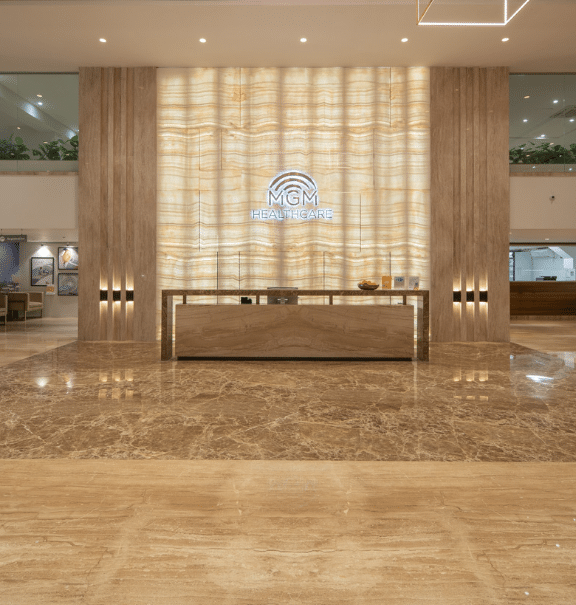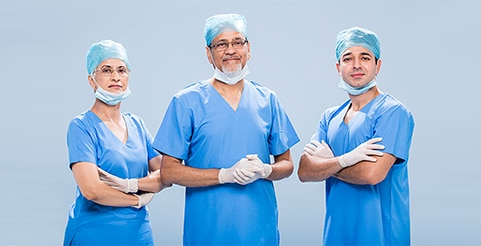Our diagnostic capabilities
We are committed to ensuring that your experience with us is relaxed and worry-free, right from consultation through recovery. The first step is to reach an accurate diagnosis of the digestive disorder. We begin this by undertaking a thorough medical history, understanding the symptoms you have experienced and note down any other pertinent information that you share that will help accurately diagnose the condition. A physical examination is also carried out to help assess the problem more completely. However, many patients require a more extensive diagnostic evaluation through laboratory test, imaging studies and/or endoscopic procedures which will help us identify the underlying condition more accurately. Some key diagnostic procedures that we offer to help diagnose and treat gastrointestinal and liver conditions include the following:
Fecal occult blood test
The fecal occult blood test (FOBT) is a laboratory test which is used to check for the presence of hidden (occult) blood in stool sample. Blood in stool may indicate hemorrhoids, colorectal cancer, or other conditions.
Stool culture
This is a test that is used to identify the presence of bacteria that causes infection in the lower GI tract.
Colorectal transit study
This test shows how well food moves through the colon.
Computed tomography (CT) scan
Detailed images of the body including details of the bones, muscles, fate and organs can be obtained via CT which is an imaging test that uses X-rays and computer.
Defecography
This is used to identify completeness of stool elimination and any anorectal abnormalities. It evaluates the rectal muscle contraction and relaxation using X-ray of the anorectal area.
Barium enema
The patient is given small amounts of a liquid containing barium to drink and a series of X-rays is taken to evaluate what happens as the liquid is swallowed.
Magnetic resonance imaging (MRI)
It’s a diagnostic test that produces detailed imaging of the organs and structures within the body using a combination of large magnets, radiofrequencies and a computer.
Magnetic resonance cholangiopancreatography (MRCP)
This test uses a combination of radio waves and magnets and is used to view the bile ducts.
Oropharyngeal motility study
The patient is given small amounts of a liquid containing barium to drink and a series of X-rays is taken to evaluate what happens as the liquid is swallowed.
Ultrasound
This test used high frequency sound waves and a computer to create images of blood vessels, tissues and organs.
Colonoscopy
This is used in screening for polyps and colon cancer and also to investigate uncontrolled diarrhoea, intestinal bleeding and inflammatory bowel disease.
Endoscopic retrograde cholangiopancreatography (ERCP)
This is used for the diagnosis of any problems in gall bladder, pancreas, bile duct and liver and uses the power of X-ray and endoscope to diagnose the underlying condition.
Oesophagogastroduodenoscopy
This is used to examine the inside of the oesophagus, stomach and duodenum using an endoscope.
Sigmoidoscopy
This is used for identifying the causes of diarrhea, abdominal pain, constipation, bleeding and any abnormal growth in intestine by examining the inside of a portion of the large intestine.
Upper endoscopy
This is a minimally invasive technique that is used to directly visualize the upper gastrointestinal tract for evaluation of disorders including acid reflux, trouble swallowing, abdominal pain and celiac disease.
Anorectal manometry
This is used for evaluating anorectal malformations and Hirschsprung disease, among other problems by determining the strength of the muscles in the rectum and anus.
Oesophageal manometry
This is used to provide complete view of the oesophagus to assess its function and is better over conventional manometric studies.
Oesophageal pH monitoring study
This study is recommended for patients with Gastroenterology Reflex Disorder (GERD) or Acid reflux and who do not respond to the usual antacid treatments.
Capsule endoscopy
This is a minimal invasive technique that is used to investigate small bowel and oesophagus.
Gastric manometry
This is used for measuring electrical and muscular activity in the stomach.
Magnetic resonance cholangiopancreatography (MRCP)
This is mainly used to obtain pictures of the bile duct using magnetic resonance imaging (MRI).


 In-person Consultation
In-person Consultation Online Video Consultation
Online Video Consultation Treatment Enquiries
Treatment Enquiries Find a Doctor
Find a Doctor Access the Patient Portal
Access the Patient Portal +91 44 4524 2407
+91 44 4524 2407  Minimal Access GI & Bariatric Surgery
Minimal Access GI & Bariatric Surgery Multi-Visceral and Abdominal Organ Transplant
Multi-Visceral and Abdominal Organ Transplant Neurology
Neurology Spine Surgery
Spine Surgery Total Knee replacement
Total Knee replacement Anaesthesiology & SICU
Anaesthesiology & SICU Paediatric Cardiology
Paediatric Cardiology Emergency Na MGM
Emergency Na MGM IVF
IVF Oncology Treatments
Oncology Treatments







